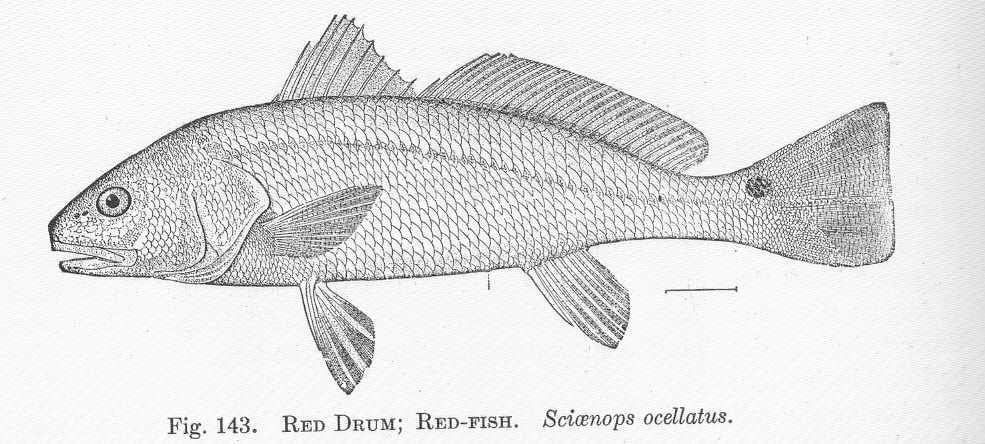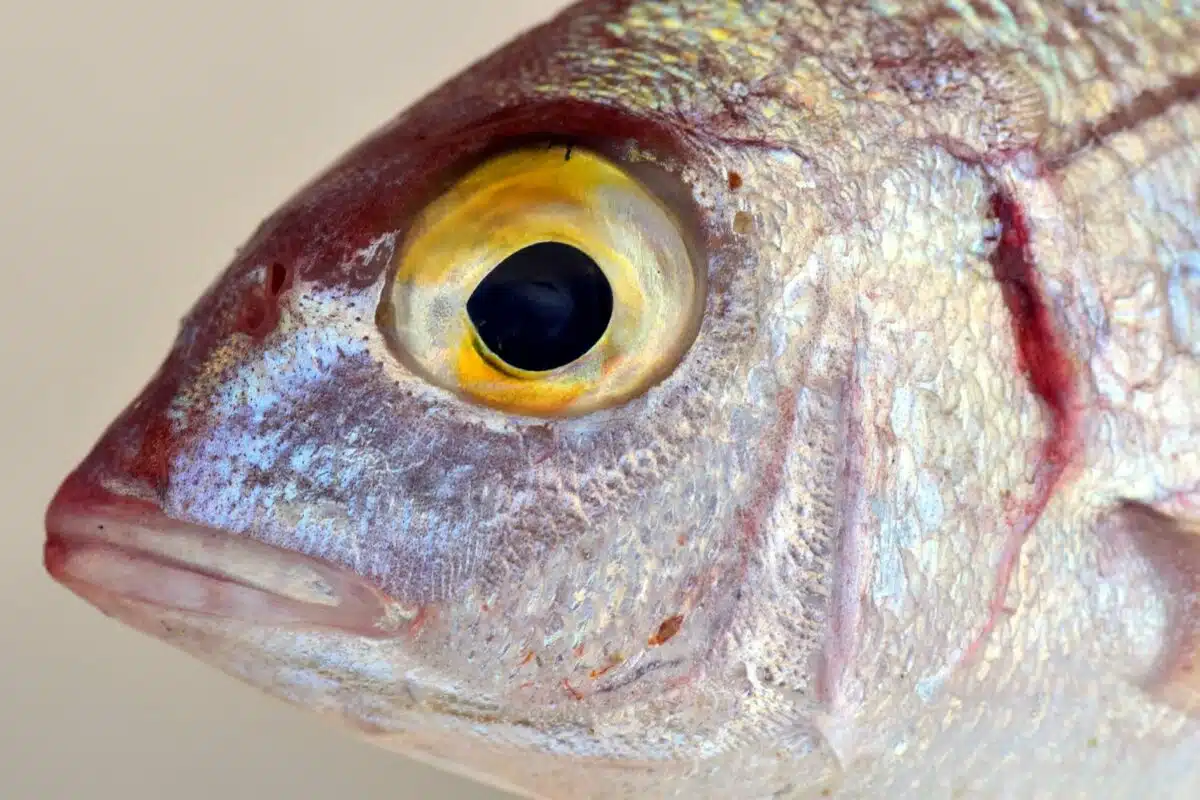Did you know there are more than 20,000 fish species in the world? Among all of these fish, one species that is not so well-known is the drum fish.

Today we will elaborate on the drum fish: its reproduction, size, habitat, consumption, lineage, and appearance, amongst many more interesting details. So keep reading!
What Is a Drum Fish?
| Drum Fish |
| The average lifespan of a drum fish ranges from six to thirteen years. |
| Female drum fish lay eggs in thousands and, sometimes, in millions. |
| Drum fish are caught for both commercial and recreational purposes. |
| The flavor of the drum fish flesh is referred to as light, fragile and sugary. |
| Drumfish are not jumpy nor quick enough to escape. These traits make them among the best to hunt. |
The drum fish is a fish that belongs to the family of Sciaenidae. It is a perch-like fish and hence a species of Perciformes.
It is a silvery-white and thick-bodied sea creature. You can find drum fish in Missouri and Mississippi rivers.
Size:
The size varies from 13-21 inches, and the weight ranges from 12 ounces to a maximum of 40 pounds.
Scientific Name:
Their scientific name is Sciaenidae. The scientifically assigned name originates from Latin, which means sea fish (which is a touch ironic, seeing as they typically inhabit rivers).
Reason Behind the Native Name:
It received its name, drum fish, because it produces a booming voice with its bladders. Sometimes it is also goes by the name of sheepshead.
Species:
Some species of drum fish include sunfish, snappers, and groupers. People deem them among the most significant order of vertebrates.
Drum Fish Lineage:
The lineage of drum fish has nearly 275 species. Some of the more prominent species are as follows:
Different Species of Drum Fish
#1 Black Drum:
It is scientifically named “Pogonias Cromis,” but other names such as Sea Drum, Saltwater Drum, Texas Drum, and Tambor are used locally.
When black drums are younger, they have five dark upright benches on either wall, which dissolve as they mature.
The black drum is the only drum fish not to possess canine teeth. Instead, they have evolved teeth in the pharynx and throat, which assists them in consuming their prey.
#2 Red Drum:
Channel bass is the second most popular name for this type of drum fish. It is native to the regions of the Atlantic Ocean between Massachusetts and the Gulf of Mexico.
Other than a black mark on the posterior end, the rest of the red drum is wholly red. But you can also find white and red drums.
#3 California Corbina:
Another name for this species is the California kingcroaker, also known as kingfish.
This species doesn’t have a swim bladder, which allows it to produce a croaking sound, hence the name California kingcroaker.
#4 Common Weakfish:
The indigenous Americans call it Squeteague. It is endangered and resides in the Atlantic Ocean along the East Coast of the United States.
Examples of common weakfish include smooth weakfish, small-scale weakfish, and small tooth weakfish.
#5 Totuava:
The totuava is also known as totoaba. It constitutes the most prevalent species of drum fish in the world, residing in the Gulf of California.
#6 Freshwater Drum:
One can find it only in North America, where it inhabits freshwater streams and lakes for the whole duration of their lives.
What Do Drum Fish Look Like?
Drumfish look like ray-finned fish, having vast and spherical bodies. An aperture between the ray and backbone with two dorsal fins on the back helps the drum fish swim more efficiently.
Drum fish have enormous mouths, solid jaws, and pointed canine teeth. Moreover, they’re a highly intelligent species that smaller fish often fall prey to.
Shades
Its colors are commonly silvery-white or light gray. The black drums that live in Gulf waters do not have color, and therefore, they appear light gray.
Their silver color makes them different from other species of their family, which come in red, brown, black, and white.
Inhabitants of muddy waters are dark gray, with bronze-like rears and sides.
The Sounds They Make
Drumfish have a significant force near their swimming bladder, a muscle that enables them to heighten their voice and create a wild sound that travels through the water. This trait gives them a very unique skill.
The enhanced voice allows them to attract a female drum fish, and consequently charms the female which leads to mating during the breeding season.
This loud sound also works as a threat indication to other species. Similarily they can track down other species of the same genus, and this assists them in staying together and connected when needed. However, California corbina doesn’t have this vocalization feature.
Preys and Threats to the Drum Fish
Being inhabitants of the deep waters, they prey on organisms living deep down in the sea, such as crustaceans, mussels, and mollusks. They also feed on insects and some fish. Their sharp canine teeth assist them in gnawing the hard outer layer of crabs as well.
Predators that hunt down the drum fish are sea birds, gigantic fish, and last but not least, humans.
Immature black drums prey on maritime worms, tiny shrimps and crabs. However, the bigger ones eat mature hard-shelled crabs, algae, and mollusks. Black drums scoop out sowed worms and mollusks and then eat them. This process is called termed “Tailing.”
Sadly, their existence is jeopardized by overfishing, illegal fishing, and habitat loss resulting from pollution.
Habitat
These bull drums dwell in the deeper bays near the landings of the Gulf. Here the black drums gather around in schools before breeding.
Black drums can be seen in the visible water of sand or the unclear waters of floods. Sometimes they swim on the surface so shallow that their backs are visible.
They can also be found in Gulf waters about 100 feet in depth.
Nevertheless, due to rapid migrations, black drums are easily caught by fishers and are exposed to such adventures.
The area most suitable for black drum is in Texas, from Corpus Christi to Brownsville on the downward shore.
How Do Drum Fish Reproduce?
The breeding and incubation differ from species to species in drum fish. However, the prevalent breeding season occurs during summer or autumn, shallow waters being the priority.
As mentioned above, the male Drumfish uses its loud sound to entice the female Drumfish, after which they come together to copulate. The female drum fish lays eggs in thousands and, sometimes, in millions.
After fertilization, the eggs hatch to produce new nymphs within a few days. The size of the larvae is as tiny as a millimeter. These little creatures evolve into mature fish over the course of a few years.
Unlike other species of drum fish, black drums breed in the bay or Gulf. Some eggs are laid in February, while others are laid in April, June, and July.
The average lifespan of a drumfish ranges from six to thirteen years. However, some which reside in saltwater can live up to 50 years – although this is highly unlikely today due to the disturbances and destruction of their habitat.
Black Drum Breeding Season:
The movements of a black drum are limited if there is an abundance of food. However, if there isn’t, they cover long distances to look for food.
These fish even make permanent homes wherever they sense excess food and a favorable environment for their breeding.
As evident from above, drums migrate where breeding is easy and convenient. They tend to direct move towards freshwater, covering a distance of 245 miles annually.
Fishing of Drum Fish
Sporting fishers locate these fish in shallow waters but do not sell them. Instead, the drum fish are caught for fun or competition. On the other hand, commercial fishers catch them for entirely different reasons – to gain a profit from them.
Marketable fishers capture them using a large net that can trap huge amounts of drum fish. The statistics of the United Nations reveal the drum fish to be the 25th most frequently caught fish in the world.
How To Catch A Drum?
If you’d like to catch a black drum fish, you need to book elongated yokes, a wheel, trotline, and a hand line. They are all economical and cheap, and can easily be purchased.
Once the equipment is ready to catch a drum, drop the bait hook in the water. Wait until a drum fish engulfs it and then pull up the hook. Cut fish, squid, and shrimp are the most common bait used.
The tackle you choose depends upon the weight of the fish. Select a tackle with one strong hook to catch bigger drum fish. For recreation, on the other hand, avoid heavy tackles; try a lighter one with a single drop with no sinker.
Drumfish are not jumpy nor quick enough to escape. These traits make them among the best fish to hunt. Nevertheless, they are strong and will put up resistance.
Consuming Drum Fish:
As has been shown, there is a large variety of drum fish out there. However, fishermen deem black drums their favorite and that a small black drum with a weight of fewer than five pounds tastes best.
Drum fish that weigh more than five pounds have rusty raw meat. Therefore, the bigger the fish, the rawer the meat will be. The flavor of their flesh is referred to as light, fragile and sugary. Drum fish inhabitants of saltwater are preferred over those living in freshwater.
Drum fish should be caught and eaten during winter before breeding since they are much bigger and thicker than those seen in summer after breeding.
Also, their meat can be cooked and eaten in many different ways. You can bake them, boil them, sauté or simmer them as you like. Typically it is served with condiments, sauces, and veggies.
Drum Fish As Jewellery
The ear bones in drum fish are frequently used as jewelry by the indigenous people of America.
These ear bones are scientifically termed otoliths. The natives walk around Lake Erie in search of these otoliths and collect and preserve them. They are also known as “lucky stones.”
Wrapping Up
Drumfish are known by various names. Some are assigned scientifically, while indigenous people have named others. Sciaenidae is the scientific name of drum fish, while sheepshead is its native name.
Drumfish have many species. A few lineages related to drum fish include the Black drum, red drum, California corbina, common weakfish, totoaba, and freshwater drum. They all have a muscle attached to their bladder that enables them to produce a loud voice.
This loud voice helps them not only to keep track of each other but also to attract the opposite sex for reproduction.
The ear bones of drum fish are transformed into jewellery, called lucky stones, by the Native Americans. Likewise, the fish can be cooked or baked and turns out delicious both ways.
Thank you for reading this article! Countless other species of fish inhabit our vast oceans, have you ever wondered what the most ugly fish are? Or maybe you’d like to see a comparison of two related freshwater fish?
- Magpie Bird Is Reunited with Her Dog Best Friend - April 24, 2024
- Dog Saves Another Dog From Drowning in Fish Pond - April 23, 2024
- Man On Motorbike Rescues Cat From Highway - April 23, 2024



